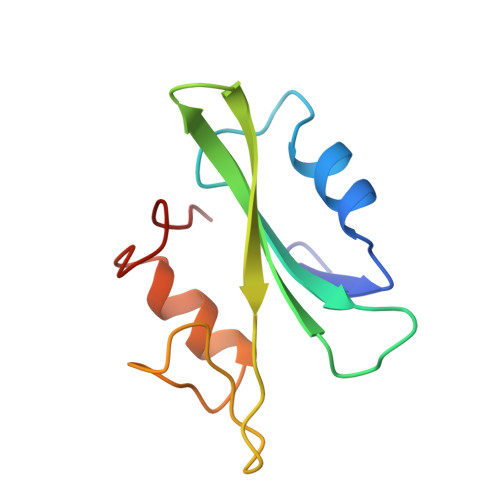The crystal structures of the SH2 domain of p56lck complexed with two phosphopeptides suggest a gated peptide binding site.
Mikol, V., Baumann, G., Keller, T.H., Manning, U., Zurini, M.G.(1995) J Mol Biology 246: 344-355
- PubMed: 7532720
- DOI: https://doi.org/10.1006/jmbi.1994.0089
- Primary Citation of Related Structures:
1CWD, 1CWE - PubMed Abstract:
Src homology-2 (SH2) domains are protein modules found within a wide variety of cytoplasmic signalling molecules that bind with high affinity to phosphotyrosyl-containing protein sequences. In order to develop SH2 inhibitors that contain phosphotyrosyl analogues resistant to cellular phosphatases, we have solved the crystal structures of the SH2 domain of p56lck in separate complexes with two high-affinity p-(phosphonomethyl)phenylalanine-containing peptides. The structures have been determined at 2.3 A and 2.25 A, and refined to crystallographic R-factors of 19.2% and 18.5%, respectively. The conformation of the SH2 domain of p56lck is essentially similar to that observed in Src and Lck complexed with a phosphotyrosine-containing peptide except in some loops and especially in the loop that connects the second and third beta-strands. This loop, which was involved in hydrogen-bond interactions with the phosphotyrosine moiety, has moved away in the phosphonopeptide complexes as a rigid body by about 7 A on two hinges leaving the tyrosine phosphate mimetic moiety accessible to the solvent. Some intramolecular hydrogen bonds with other residues of the third and fourth beta-strands stabilize an open conformation of the lid, suggesting a flap mechanism for peptide binding.
- Preclinical Research, Sandoz Pharma AG, CH-4002, Basel, Switzerland.
Organizational Affiliation:


















